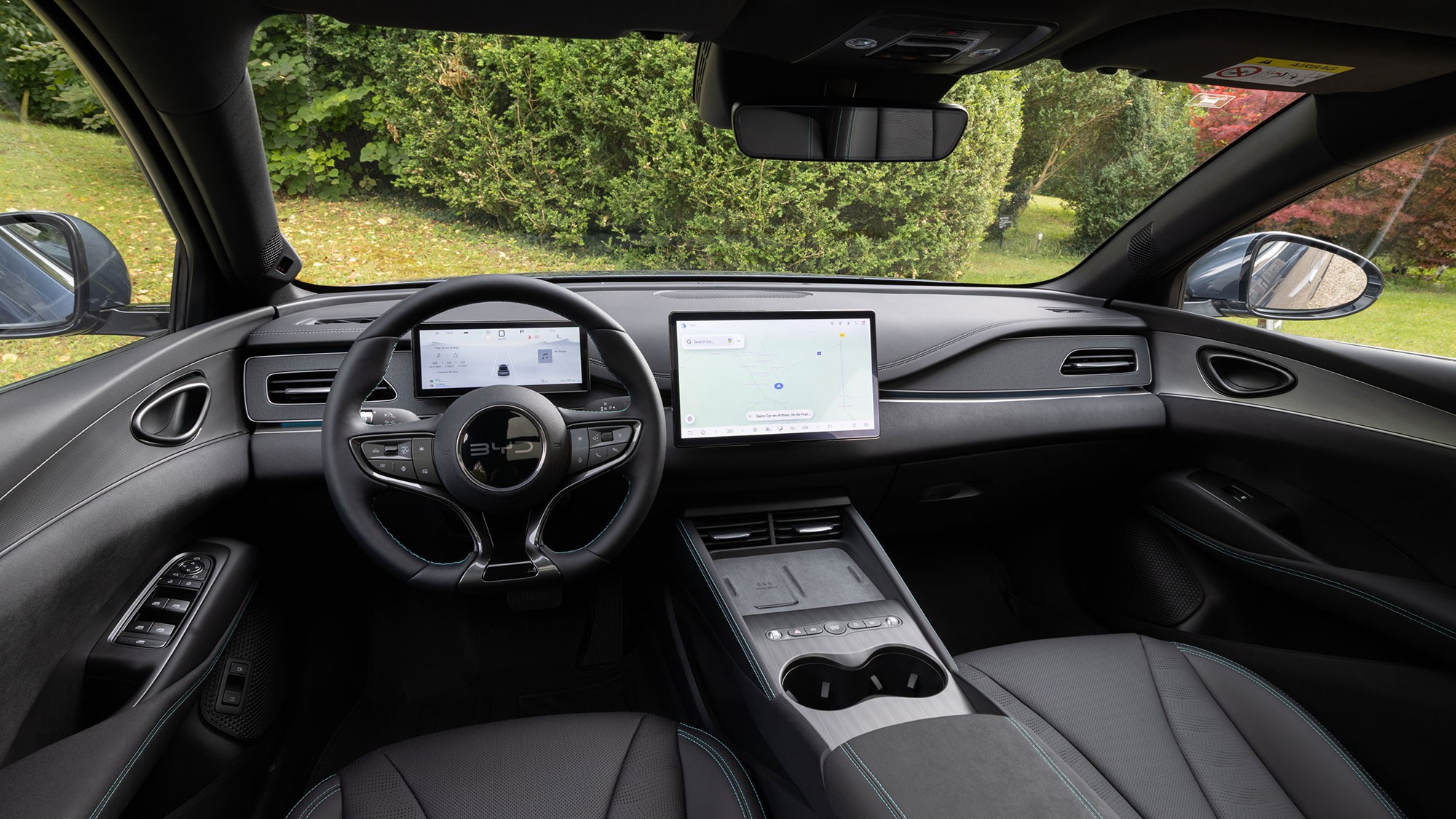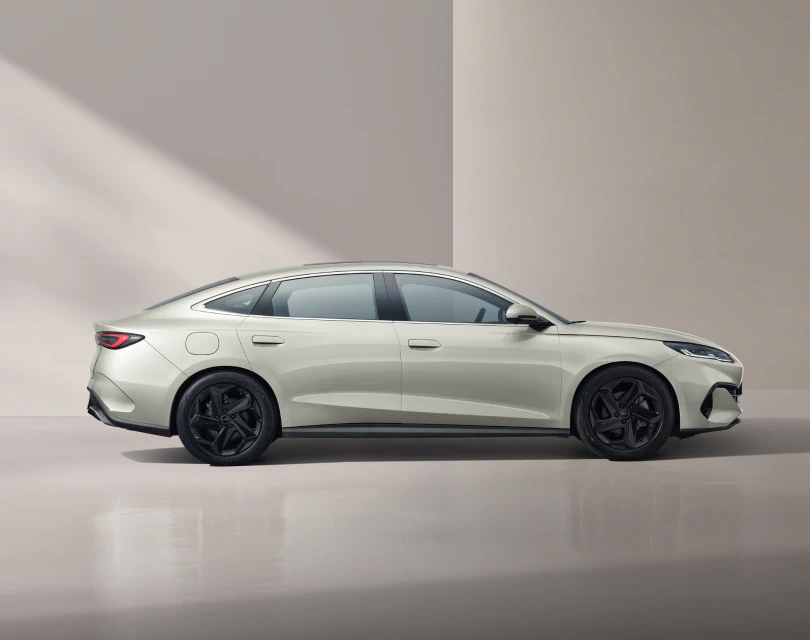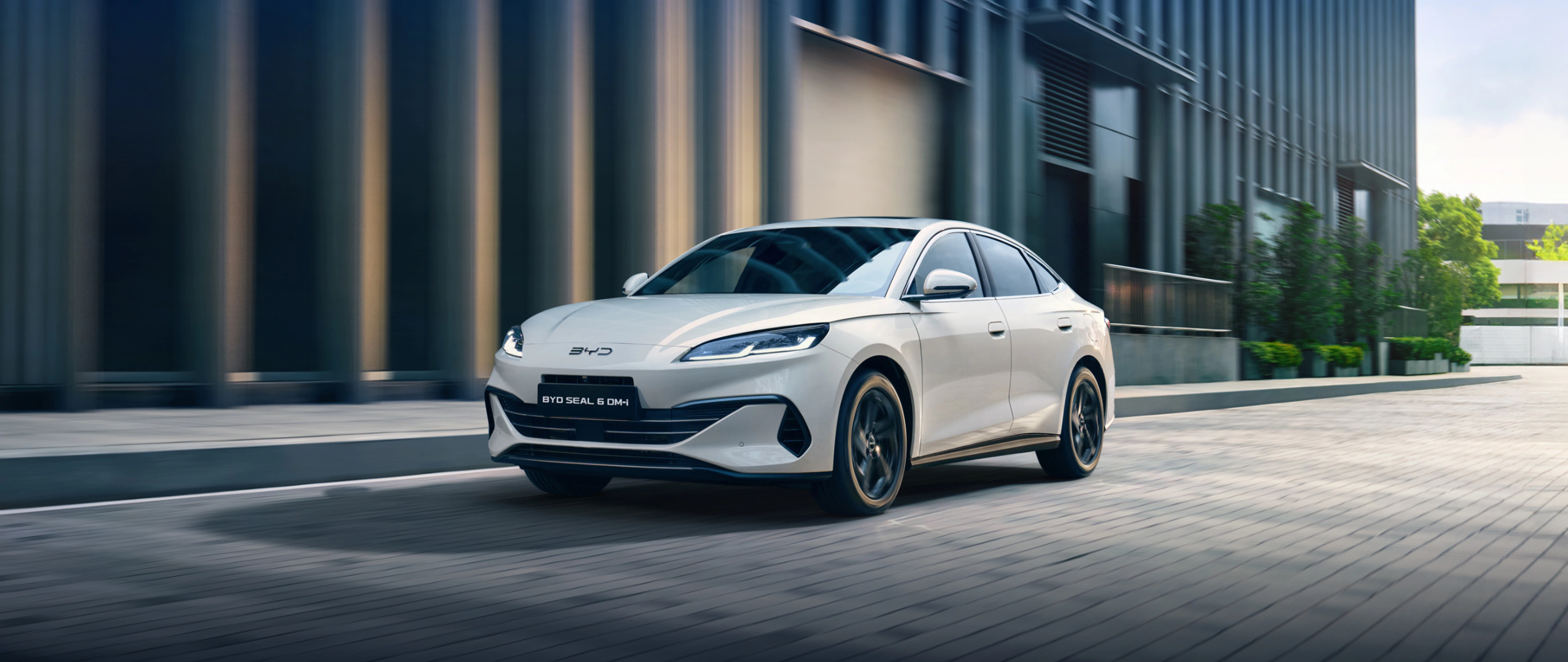

Imagine you’re driving the streets of Málaga, or Jakarta, or any vibrant city where every minute of downtime in your vehicle means money lost. Now imagine a car that nods first to efficiency, then to comfort, and finally to smart business sense. This is exactly where the BYD Seal 6 DM-i steps in—and especially compelling when taxi drivers are taking notice. Why? Because when the people whose livelihood depends on transport begin choosing a model, it tells you something important.
1. From Taxi-Fleet Buzz to Your Next Smart Purchase
First of all, let’s set the scene: the Seal 6 DM-i isn’t just another hybrid. It is part of BYD’s push into plug-in hybrids (PHEVs) that deliver both pure-electric driving and petrol backup. According to BYD’s European launch, this model offers up to 105 km (or more) of pure electric range, and a combined range of more than 1,500 km on full battery + tank.
For taxi drivers, that is gold: fewer stops at the petrol pump, more time on the road earning. And if they are starting to buy it, you might seriously ask: Are we looking at a car worth considering for our own service-oriented ventures?
Translation to you: If it works for a fleet working 12-hour shifts, it may well work for your client-serving business, your rental service, even your upscale chauffeur offering.
2. The Comfortable Premium Sedan That Means Business
Moreover, the Seal 6 DM-i is more than frugal—it’s premium in feel without the premium price tag (relatively).
-
The version with 212 hp (≈ 156 kW) and a 19 kWh LFP “Blade” battery delivers the stronger specs.
-
Claimed WLTP fuel consumption: 1.5 L/100 km in ideal conditions.
-
A design language of its own—no copying-style—but “ocean inspired”, streamlined, practical.
That means if you’re thinking of purchasing this model for a service business (e.g., high-end taxi, ride-share, corporate transport), you’re offering your clients luxury, reliability, and sustainability—three big checkboxes.
At the same time, the budding trend among taxi drivers buying this model sends a signal: this car is not only good for occasional use—it’s good for heavy, all-day use. That reinforces the “smart purchase” idea.
3. Why This Model Makes Extra Sense for Service-Based Businesses
Now, let’s shift gears to why you should consider it—especially if you’re in the business of providing transport or premium service.
-
Lower operating costs: With such low fuel consumption in ideal hybrid mode, your running costs drop.
-
Strong resale-and-fleet credibility: When taxi drivers adopt a car, maintenance routes open up, spare parts workflow improves, total cost of ownership goes down.
-
Comfort, space, and premium features: A spacious cabin (for five adults), good boot space (around 491 litres in sedan version) according to European launch data.
-
Green credentials: In many cities, hybrid or PHEV vehicles enjoy lower taxes, access to restricted zones, parking incentives. For a service business that often enters city centres, that’s a big plus.
-
Brand strength: BYD is rapidly growing in Europe and globally—vehicles from manufacturers with strong support networks matter for business usage.
Thus, if you’re reading this and thinking: “Could I place this in my fleet? Or could I buy one for my driver-service business?” — the answer increasingly seems “yes”.
4. Transitional Points to Keep in Mind Before You Buy
However—and this is key—no car is perfect. When you’re buying for business, you need to consider real-world variables. So, some “transition” thoughts:
-
Charging infrastructure & usage patterns: The pure electric range (e.g., ~100 km) is excellent, but if you do long highway runs without frequent charging, you’ll revert to the petrol-engine assist. So plan your usage accordingly.
-
Service network in your region: BYD might be newer in certain markets. For a fleet condition, you need assured maintenance, parts availability.
-
Relative size & vehicle type: The Seal 6 is a sedan (and also a Touring variant) with premium comfort. But if your service fleet needs huge boot space or ultra-tight manoeuvrability, check dimensions.
-
Up-front investment vs. lifetime cost: Even though fuel costs are lower, initial cost is higher than a basic sedan. But if you run high-mileage usage (e.g., taxis, shuttles) the savings compound over time.
-
Resale & secondary market: As more taxis buy them, the used market will develop. That’s good—but also consider how you’ll manage depreciation.
5. How to Make the “Conversion” Decision (Buy for Service Use)
Finally, let’s let the style of Tere Liye guide us: we speak simply, conversationally, with heart. And the question you should ask yourself is: “If I buy this car for my business today, will I or my driver be happy with it three years down the line?”
So let’s walk through a short decision checklist:
-
Do I have a charging point (or easy access to one) at my base or garage?
-
Will my driver’s usage pattern allow them to get the advertised electric range often? (City vs highway mix)
-
Is the dealership / service centre for BYD within reasonable reach for routine maintenance?
-
Will the clients I serve (executives, corporate shuttles, VIPs) value the premium feel this sedan gives?
-
Am I ready for slightly higher up-front cost in exchange for far lower running cost, less fuel stops, fewer breakdown risks?
If your answer to most of these is “yes”, then you should seriously consider purchasing the BYD Seal 6 DM-i for your service business. Because when taxi drivers are beginning to buy it—often a sign of smart, cost-focused decisions—you may be ahead of the trend.

